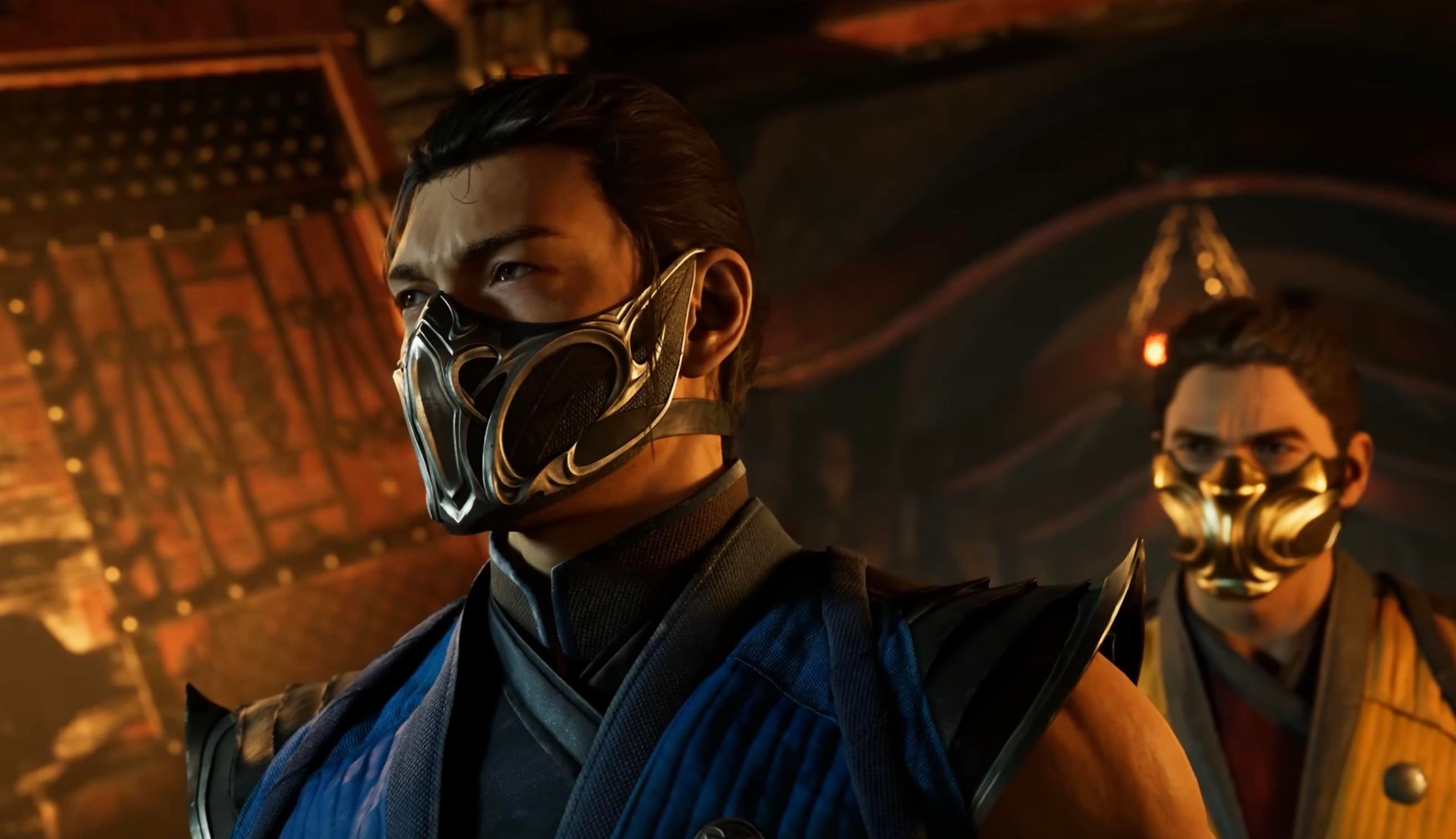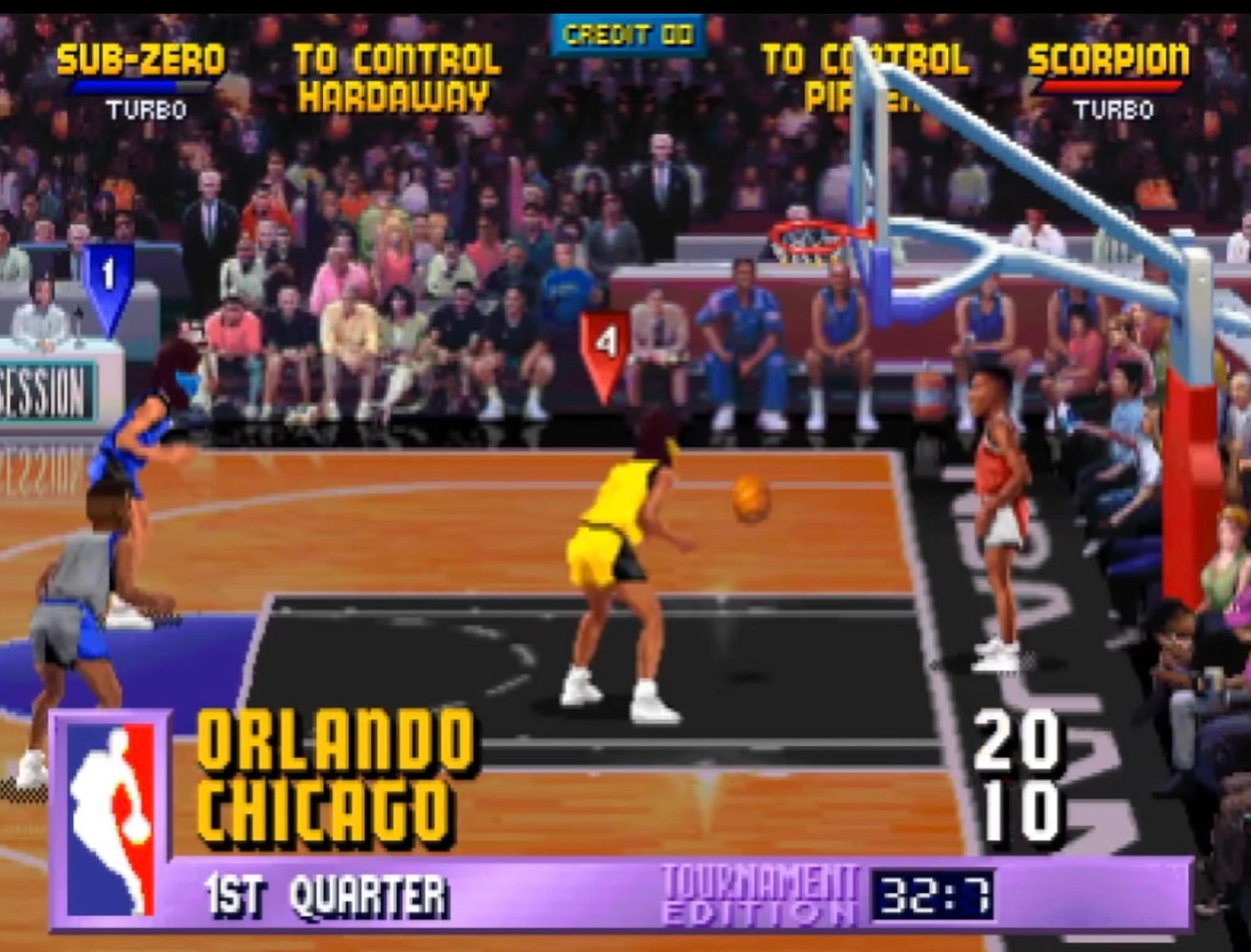If you click on a link and make a purchase we may receive a small commission. Read our editorial policy.
Mortal Kombat: How to play the games in release and chronological order
Want to get started on playing the Mortal Kombat franchise? Here’s how to do it!

In 1992 Midway Games unleashed Mortal Kombat, and the world of video games hasn’t been the same since. From arcade cabinets to next gen consoles, the franchise has never missed a step. Maybe it’s the iconic characters, or their toasty fatalities, but we can’t deny that Mortal Kombat is one of the most enduring video game franchises.
The original arcade game was about a group of fighters competing in the ultimate tournament. Since then, the franchise has evolved, telling elaborate stories that span multiple realms and timelines. If you have ever wanted to play every game in the Mortal Kombat franchise, but weren’t sure how, then Popverse has you covered! This guide will tell you everything you need to know about playing the video game franchise in release and chronological order.
How to play Mortal Kombat in release order

Are you ready for the ultimate battle? If you want to play the Mortal Kombat franchise in release order, here is how you would do it. For this list, we only counted Mortal Kombat games released for consoles. This means that releases such as the Tiger Electronics Mortal Kombat game aren’t on here (that would be considered a toy).
Some Mortal Kombat games have been re-released with a new title and added gameplay. Situations like that are tricky. If there are enough new playable characters and gameplay features, then this list will classify those as new games. Ultimate Mortal Kombat 3 is a great example, as it has enough new features to be considered a different game. In contrast, Mortal Kombat Arcade Kollection has ports of older games, without enough new material to justify classifying it as its own release. As a result, it has been left off this list.
This list only includes Mortal Kombat games. Although characters like Scorpion have appeared in other video games, such as Injustice: Gods Among Us, those are not Mortal Kombat games. Don’t worry, I will cover guest appearances later in this guide.
But enough logistics. Round 1…fight!
- Mortal Kombat (1992)
- Mortal Kombat 2 (1993)
- Mortal Kombat 3 (1995)
- Ultimate Mortal Kombat 3 (1995)
- Mortal Kombat Trilogy (1996)
- Mortal Kombat 4 (1997)
- Mortal Kombat Mythologies: Sub-Zero (1997)
- Mortal Kombat Gold (1999)
- Mortal Kombat: Special Forces (2000)
- Mortal Kombat Advance (2001)
- Mortal Kombat: Deadly Alliance (2002)
- Mortal Kombat: Tournament Edition (2003)
- Mortal Kombat: Deception (2004)
- Mortal Kombat: Shaolin Monks (2005)
- Mortal Kombat: Unchained (2006)
- Mortal Kombat: Armageddon (2006)
- Mortal Kombat vs. DC Universe (2008)
- Mortal Kombat (2011)
- Mortal Kombat Mobile (2015)
- Mortal Kombat X (2015)
- Mortal Kombat 11 (2019)
- Mortal Kombat: Onslaught (2023)
- Mortal Kombat 1 (2023)
How to play Mortal Kombat in chronological order

If you wanted to play the games in chronological order, here is how you would do it. Some of the games are remakes or remasters of older games. In these instances, the games have been grouped together on the timeline.
Original timeline
- Mortal Kombat: Special Forces (2000)
- Mortal Kombat Mythologies: Sub-Zero (1997)
- Mortal Kombat (1992)
- Mortal Kombat: Shaolin Monks (2005)
- Mortal Kombat 2 (1993)
- Mortal Kombat 3 (1995)/ Ultimate Mortal Kombat 3 (1995)/ Mortal Kombat Trilogy (1996)/ Mortal Kombat Advance (2001)
- Mortal Kombat: Onslaught (2023)
- Mortal Kombat 4 (1997)/ Mortal Kombat Gold (1999)
- Mortal Kombat: Deadly Alliance (2002)
- Mortal Kombat: Deception (2004)/ Mortal Kombat: Unchained (2006)
- Mortal Kombat: Armageddon (2006)
DC Universe crossover
Mortal Kombat 11 confirmed that Mortal Kombat vs. DC Universe takes place in its own timeline. According to the game, Kronika had manipulated the timeline to create the standalone reality. As such, Mortal Kombat vs. DC Universe exists on its own in this chronology list.
- Mortal Kombat vs. DC Universe (2008)
NetherRealm Studios timeline
In 2010 Warner Brothers acquired Midway Games and reorganized the company into NetherRealm Studios. In 2011 NetherRealm released Mortal Kombat, which rebooted the franchise. An alternate timeline was created after Raiden receives a message from his future self.
- Mortal Kombat (2011)
- Mortal Kombat X (2015)/ Mortal Kombat Mobile (2015)
- Mortal Kombat 11 (2019)
Rebooted timeline
Mortal Kombat 1, the latest entry in the series, will reboot the franchise. A new timeline will be created following the events of Mortal Kombat 11.
- Mortal Kombat 1 (2023)
How many consoles would you need to play every Mortal Kombat game?

The Mortal Kombat series began in 1992, and we’ve gotten a lot of new gaming consoles since then. This begs the question, if someone wanted to play every game on this list, how many consoles would they need? Luckily some of the older games have been ported for newer consoles, so you don’t have to visit too many thrift stores. Some newer consoles also have backwards combability. Here’s a brief breakdown.
To play every Mortal Kombat game using as few consoles as possible, you would need a Windows computer, PlayStation Portable, Gameboy Advance, original XBOX console, Sega Dreamcast and a PlayStation 2. You could choose between an Android or IOS phone, an Xbox 360 or a PlayStation 3, and a PlayStation 1 or a Nintendo 64. This means that you would need at least 9 consoles to play every Mortal Kombat game. You could play with more consoles if you wanted to, but 9 is the smallest number needed to support every game on the list.
It’s interesting to note that if you have a Windows computer, you don’t need a next gen console like PlayStation 5 or Xbox Series X. However, keep in mind that not all Windows computers are able to support each game. Please check the specs on your PC and the installation requirements for each game.
Have the Mortal Kombat characters appeared in other video games?

When you’re one of the biggest video game franchises in the world, everyone wants a piece of you. The popularity of Mortal Kombat has resulted in some of the characters making guest appearances in other video games. In most cases, these appearances can be considered Easter eggs, or fun special features. In other words, they aren’t part of the Mortal Kombat canon.
This listing only includes confirmed appearances of Mortal Kombat characters. The video game Divekick contains quotes and imagery that pay homage to Mortal Kombat, but the game isn’t included here because there are no appearances from any Mortal Kombat characters. However, games like Injustice: Gods Among Us contain Mortal Kombat characters, so the title is included on this list.
Here is a listing of video games guest-starring Mortal Kombat characters.
- NBA Jam Tournament Edition (1994) – Sub-Zero, Reptile, Scorpion, and Raiden are unlockable characters. Yes, you can play basketball as a Mortal Kombat character.
- World Cup Soccer Pinball Machine (1994) – Raiden can be seen during a bonus round.
- NFL Blitz (1997) – Shinnok and Raiden are unlockable characters. That’s right, you can also play football as a Mortal Kombat character.
- The Grid (2000) – Scorpion, Sub-Zero, and Noob Saibot can be found in the game.
- Psi-Ops: The Mindgate Conspiracy (2004) – The game features a Scorpion skin for your character.
- MLB Slugfest: Loaded (2005) – Scorpion and Sub-Zero both make appearances.
- Unreal Championship 2: The Liandri Conflict (2005) – Raiden is an unlockable character.
- NBA Ballers: Phenom (2006) – Liu Kang, Sub-Zero, and Raiden can be seen in the background during the Training Academy stage.
- Batman: Arkham City Lockdown (2011) – Kano appears as a secret boss.
- Injustice: Gods Among Us (2013) – Scorpion is a playable character. In addition, Shao Kahn and Sub-Zero appear for a cameo.
- WWE Immortals (2015) – Johnny Cage is a playable character.
- Injustice 2 (2017) – Raiden and Sub-Zero appear in the game.
Is Mortal Kombat part of the DC Universe?

The Mortal Kombat video games are not part of the DC Universe, but we can’t blame you if you assumed they were. The two franchises have crossed over a few times, thanks to interdimensional travel. Each crossover has made it clear that the characters don’t inhabit the same universe. The 2008 game Mortal Kombat vs. DC Universe has the characters interacting by traveling across dimensions. While Mortal Kombat characters appear in DC’s Injustice video game series, they aren’t part of the story modes in the games, and therefore their presence isn’t canon.
Now you have everything you need to play through the Mortal Kombat video game series. Get ready to perform a ton of fatalities as you test your might!
Follow Popverse for upcoming event coverage and news
Find out how we conduct our review by reading our review policy
Let Popverse be your tour guide through the wilderness of pop culture
Sign in and let us help you find your new favorite thing.
















Comments
Want to join the discussion? Please activate your account first.
Visit Reedpop ID if you need to resend the confirmation email.